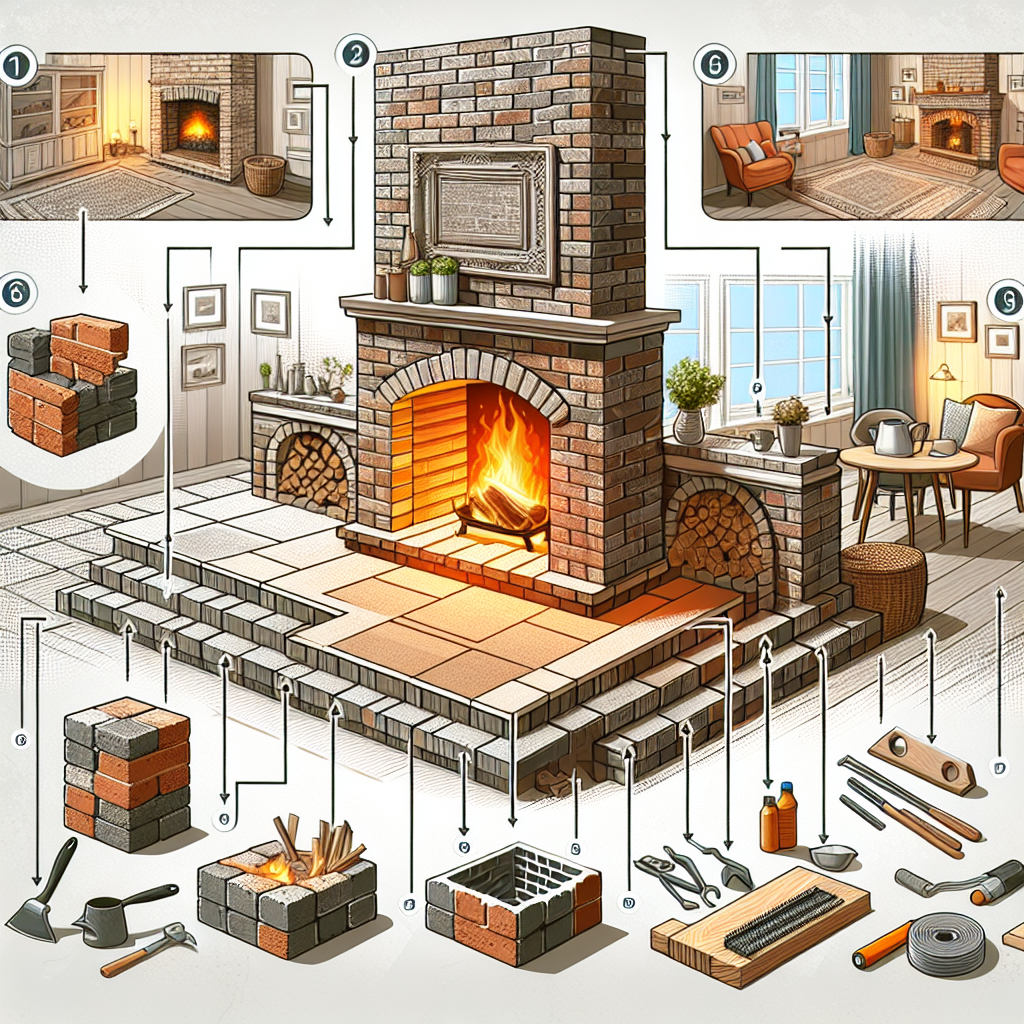
How to make a fireplace
Creating a Cozy Ambiance: Your Guide to Building a Fireplace
Having a fireplace in your home can be a game-changer, creating a warm and inviting atmosphere during chilly evenings. Whether you’re looking to install one for aesthetic purposes, warmth, or both, understanding the basics of fireplace construction is essential. This guide will walk you through the steps and considerations involved in building your fireplace, ensuring it is safe, efficient, and tailor-made for your space.
Assessing Your Needs
Before diving into the construction, it’s crucial to evaluate your needs and preferences. This step will help shape the type of fireplace that best suits your living space. Here are some considerations:
- Type of Fireplace: Will it be wood-burning, gas, or electric?
- Space Availability: How much room do you have for the fireplace?
- Building Codes: Are there local codes or regulations that need adherence?
- Style Preferences: What design aesthetic do you prefer—modern, rustic, or traditional?
Choosing Your Fireplace Design
The design of your fireplace sets the tone for your living space. Here are some common designs to consider:
- Traditional Wood-Burning: Classic and timeless, offering the crackling sounds and smells of wood.
- Modern Gas Fireplaces: Sleek, efficient, and easy to operate.
- Electric Fireplaces: Convenient and versatile, often featuring stunning visual effects without the need for venting.
- Corner Fireplaces: Perfect for space-saving solutions and creating a cozy nook.
Planning Your Fireplace Installation
Now that you’ve assessed your needs and chosen a design, it’s time to plan your installation. This involves gathering materials, deciding your installation location, and preparing for construction.
Gathering Materials
Depending on the type of fireplace, the materials needed may vary. Here’s a general list for each type:
| Fireplace Type | Materials Needed |
|---|---|
| Wood-Burning | Firebrick, mortar, chimney flue, stone or brick facing, door, and mantel. |
| Gas | Gas line, ignition system, refractory panels, venting components, and finishing materials. |
| Electric | Electric unit, decorative frame, and any additional decor items as desired. |
Selecting a Suitable Location
Choosing the right location is essential for both functionality and safety. Here are some factors to consider:
- Accessibility: It should be easily accessible for use and maintenance.
- Ventilation: Ensure proper ventilation (especially for wood and gas fireplaces).
- Distance from Flammable Materials: Maintain a safe distance from furniture, curtains, and other flammable items.
- Visual Impact: It should enhance the overall look of your living space.
Building Your Fireplace: Step-by-Step
Once you have all the requirements and plans in place, it’s time to start building your fireplace. Below are the general steps for constructing a traditional brick fireplace. Please consult local building codes, and if the project seems too challenging, consider hiring a professional.
Step 1: Prepare the Foundation
Begin by laying a solid foundation. This step is crucial to ensure the stability of your fireplace.
- Excavate a square area for the foundation, about 4 inches deep.
- Fill it with gravel to promote drainage and compact it well.
- Mix concrete and pour it into the frame for foundational support, allowing it to cure completely.
Step 2: Build the Firebox
The firebox is the part of the fireplace where the fire burns and is a vital component for efficiency and heat production. Here’s how to do it:
- Use firebricks to construct the inner walls of the firebox. Ensure they are laid flat and level.
- Mix mortar and spread it between bricks for adhesion.
- Allow the mortar to set as per the manufacturer’s instructions.
Step 3: Installing the Chimney
The chimney is essential for venting smoke outside. Here’s how to proceed:
- Follow the manufacturer’s guidelines to install the chimney flue, ensuring it extends above the roofline.
- Construct the chimney chase around the flue using regular bricks, ensuring it is weather-tight and aesthetically pleasing.
- Cap the chimney to prevent water intrusion.
Step 4: Finish the Surrounding Area
With the firebox and chimney in place, it’s time to finish the fireplace’s exterior.
- Choose a facing material, such as stone or brick, and apply it to the outside of the firebox and chimney.
- Install a mantel if desired, ensuring it is well secured and made of non-combustible materials.
- Clean up the area and remove any debris.
Safety Considerations When Building a Fireplace
Safety should always be a priority when constructing a fireplace. Here are key safety tips to keep in mind:
- Consult local building codes and regulations for requirements.
- Use non-combustible materials to prevent fire hazards.
- Ensure proper clearances from walls and furniture.
- Install carbon monoxide detectors near the fireplace.
- Have your chimney inspected annually and cleaned as necessary.
Maintenance Tips for Your Fireplace
To keep your fireplace functioning optimally, regular maintenance is essential:
- Check and clean the chimney to prevent creosote buildup.
- Inspect the firebox for cracks or damage.
- Ensure that your damper opens and closes properly.
- Keep the area around the fireplace clear of debris.
- Store firewood properly, at least 30 feet from the home.
Final Thoughts
Building a fireplace can enhance anyone's home by providing warmth and style. Whether you decide to take on this project yourself or hire a professional, understanding the basics can help ensure a successful installation. Remember to always prioritize safety and maintenance to make your fireplace a beloved feature of your home for years to come.
With a comprehensive plan and careful execution, you’re well on your way to creating a cozy escape right in your living room.
By Guest, Published on September 21st, 2024